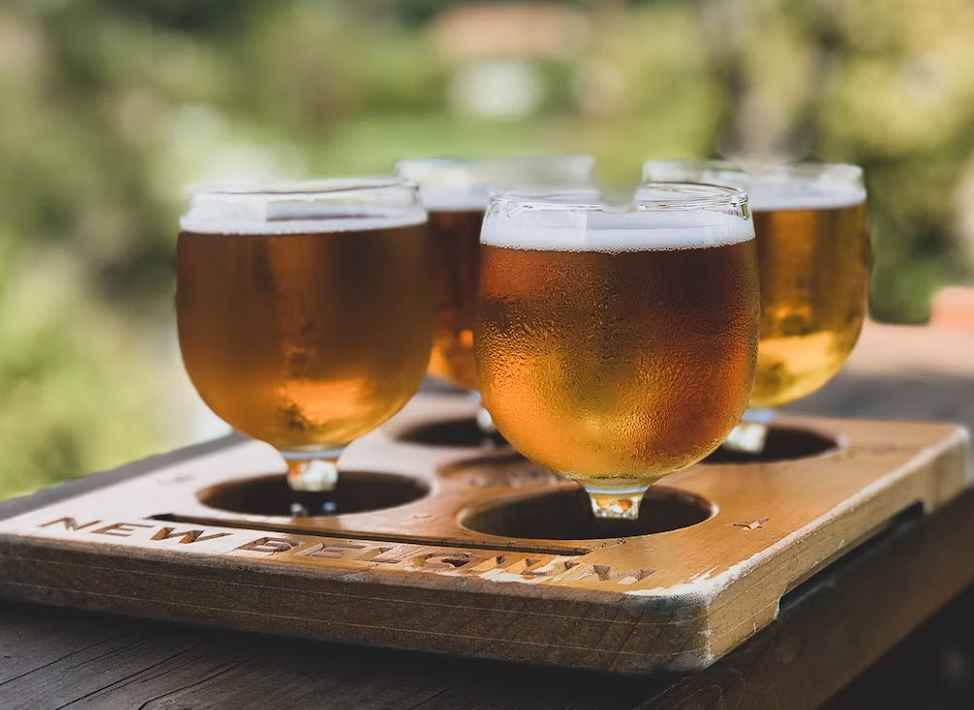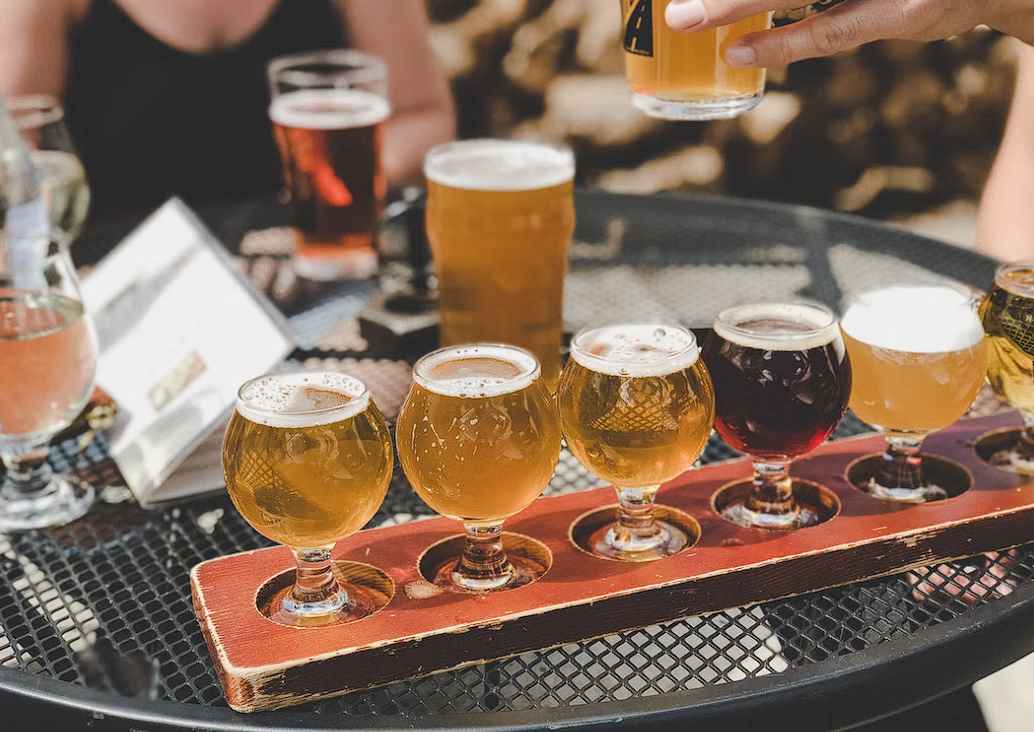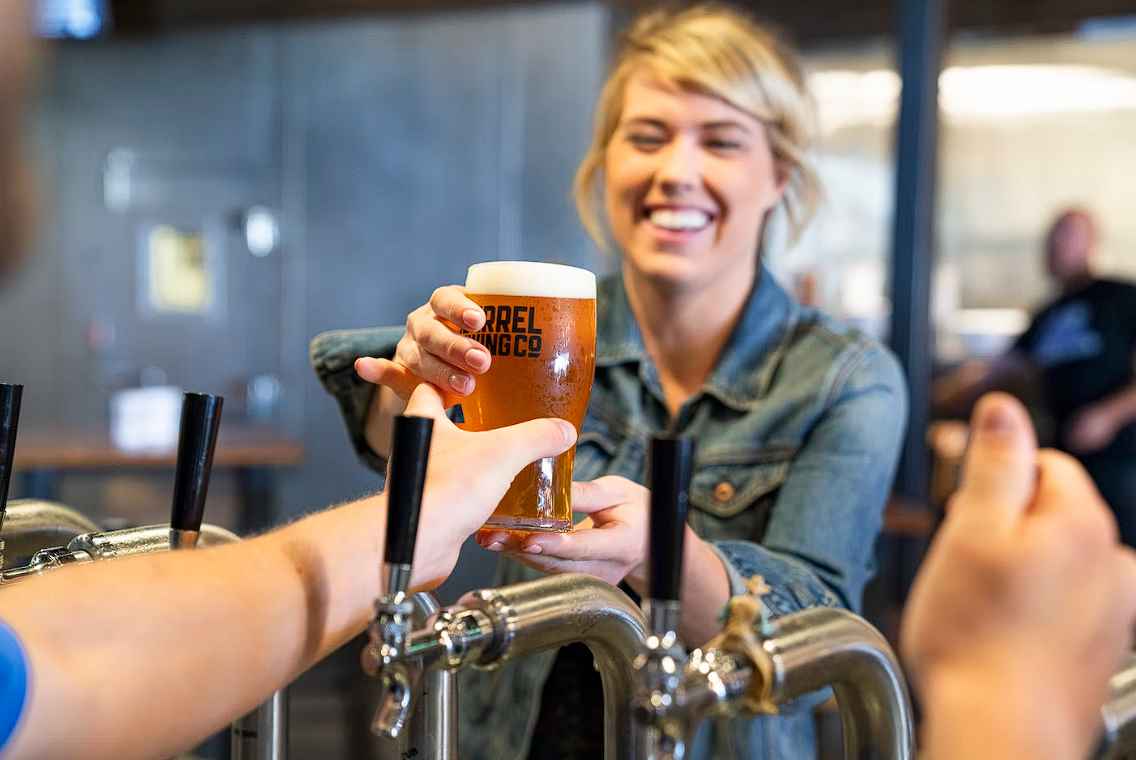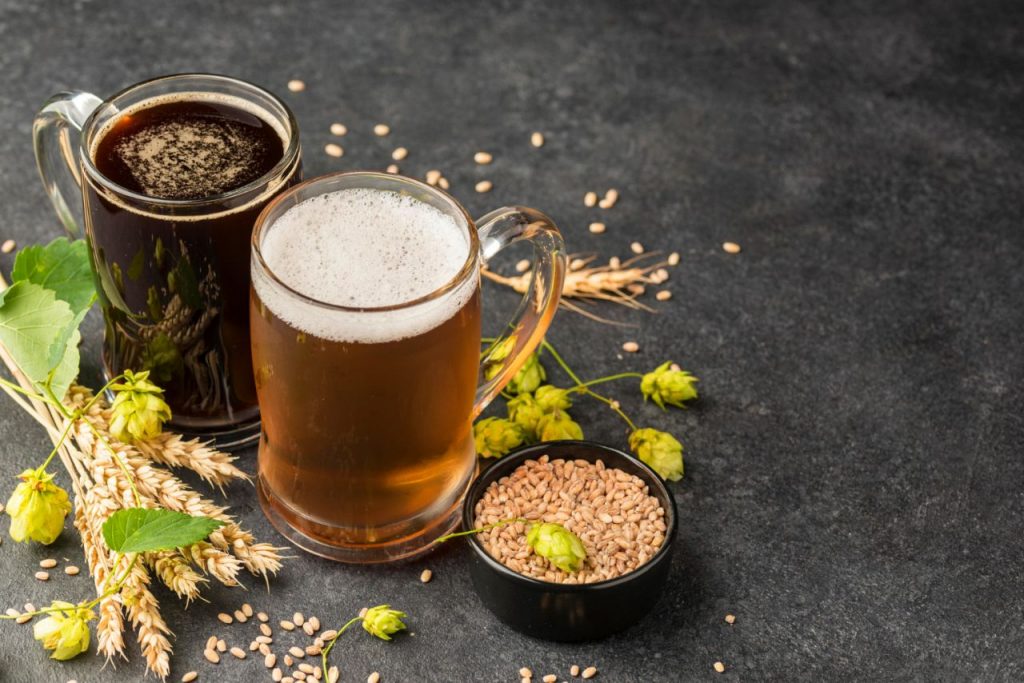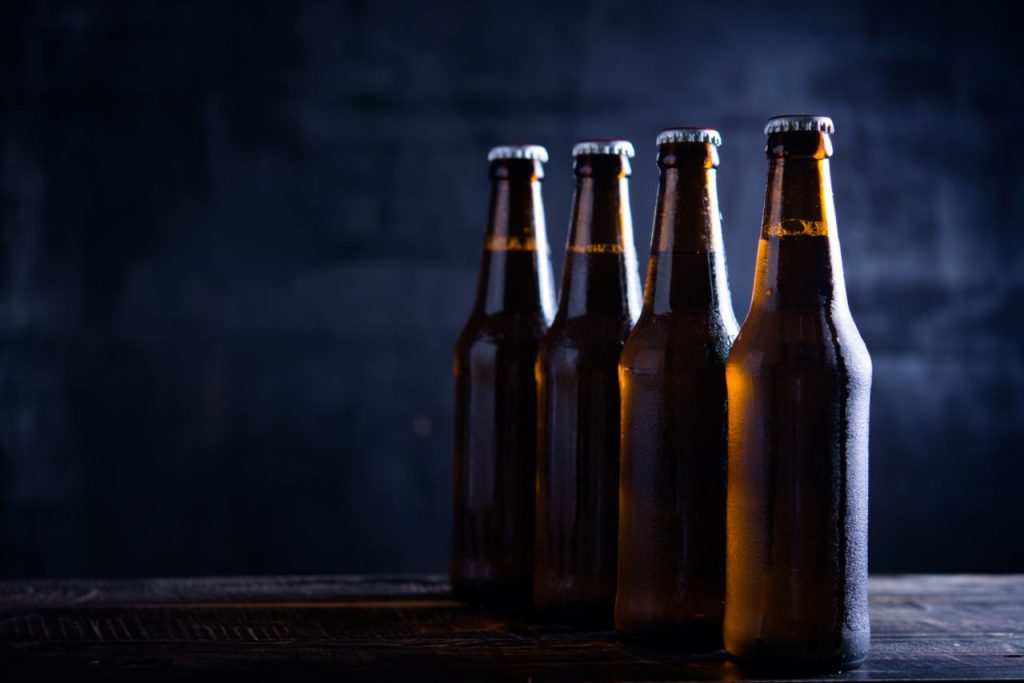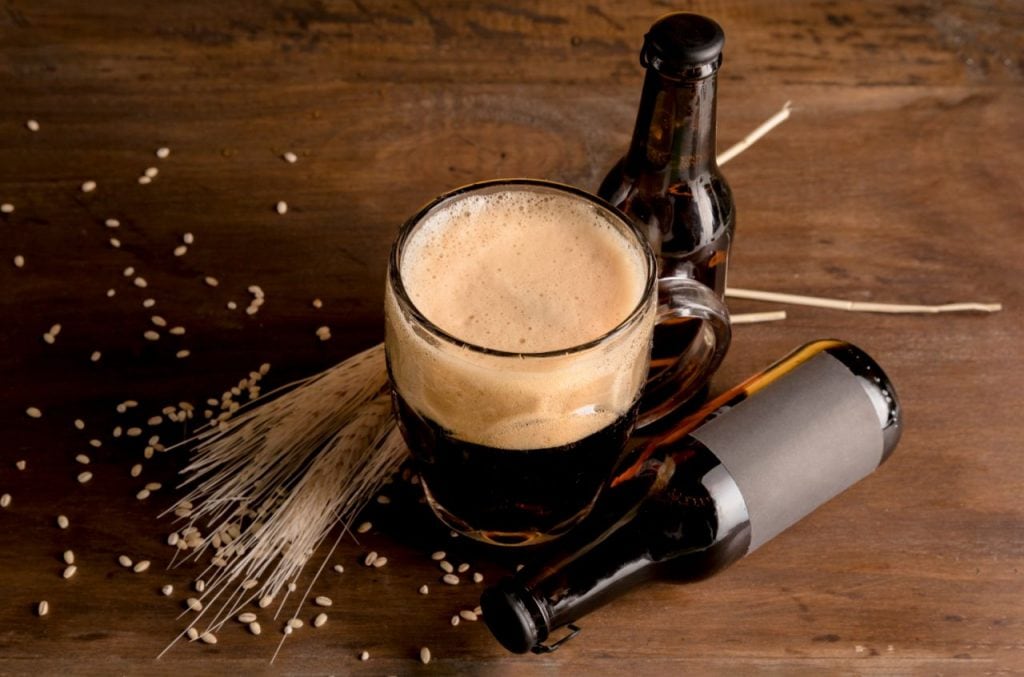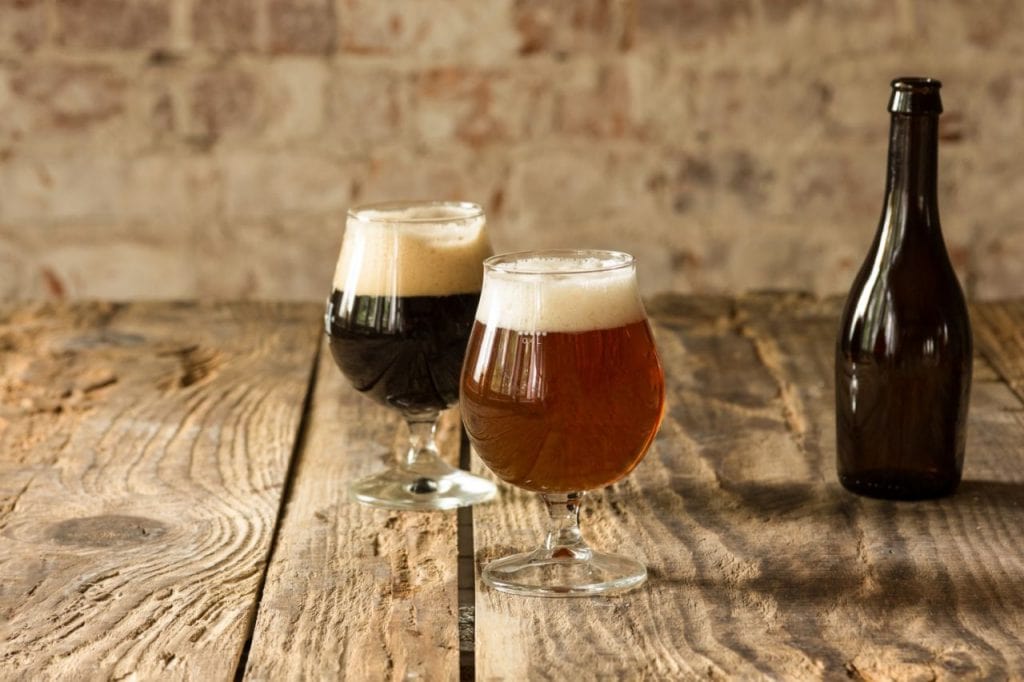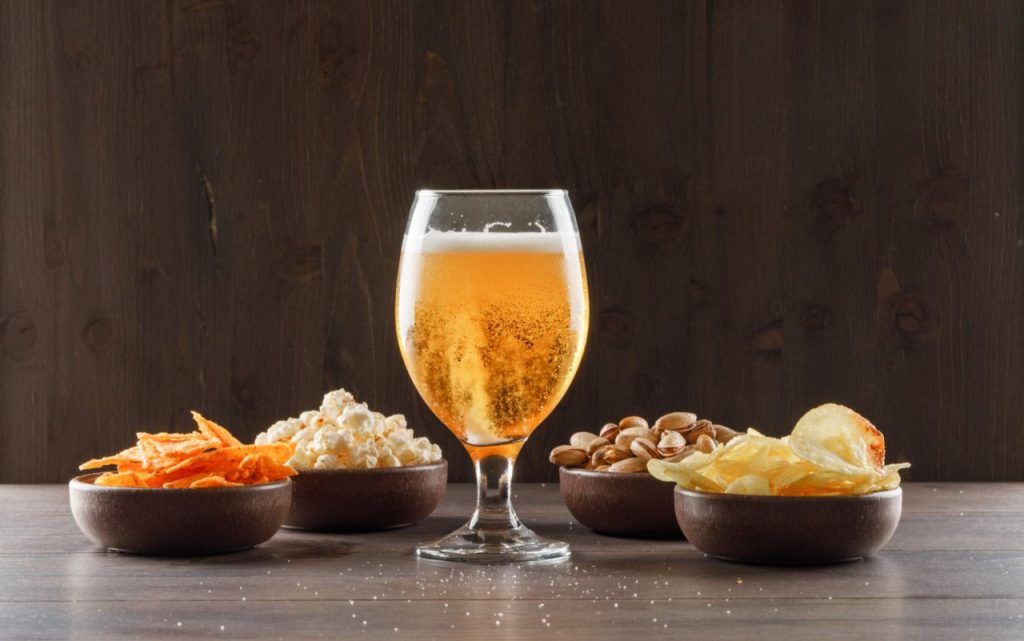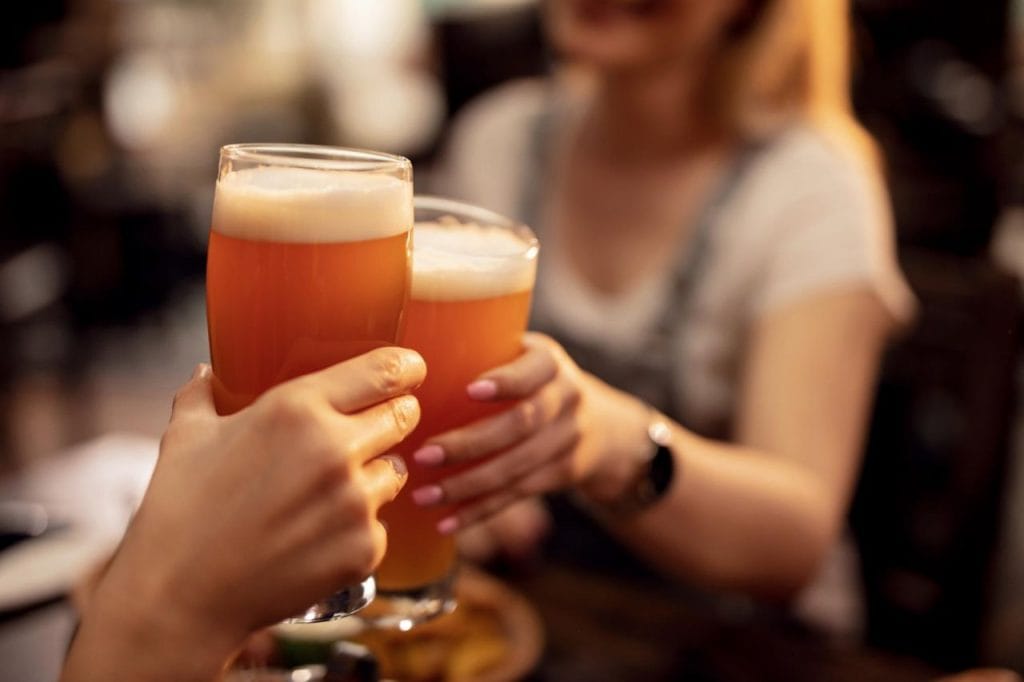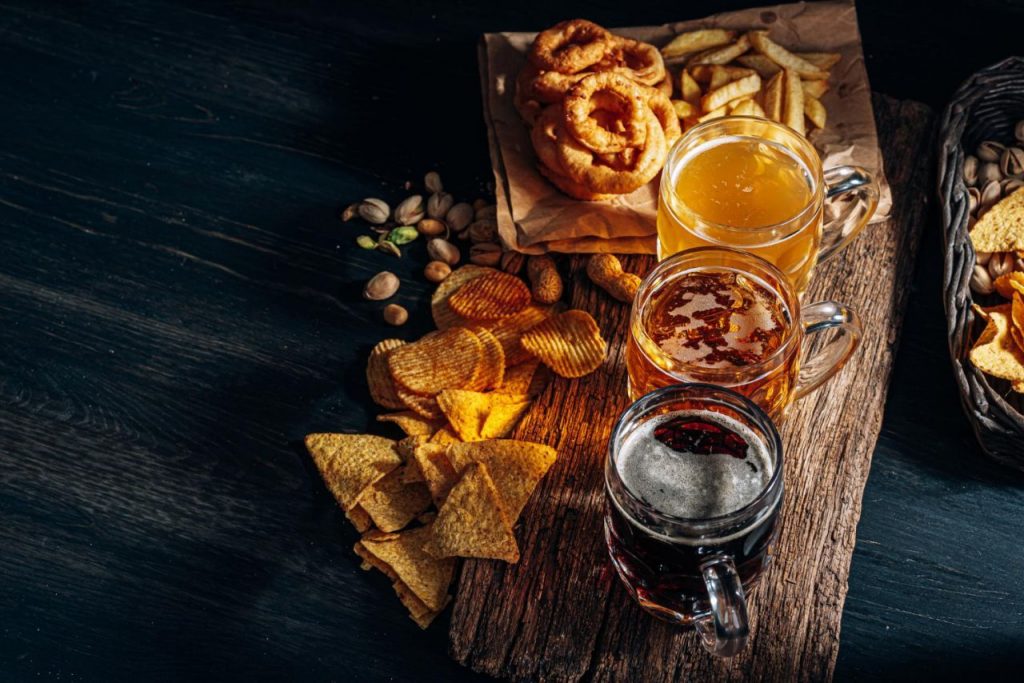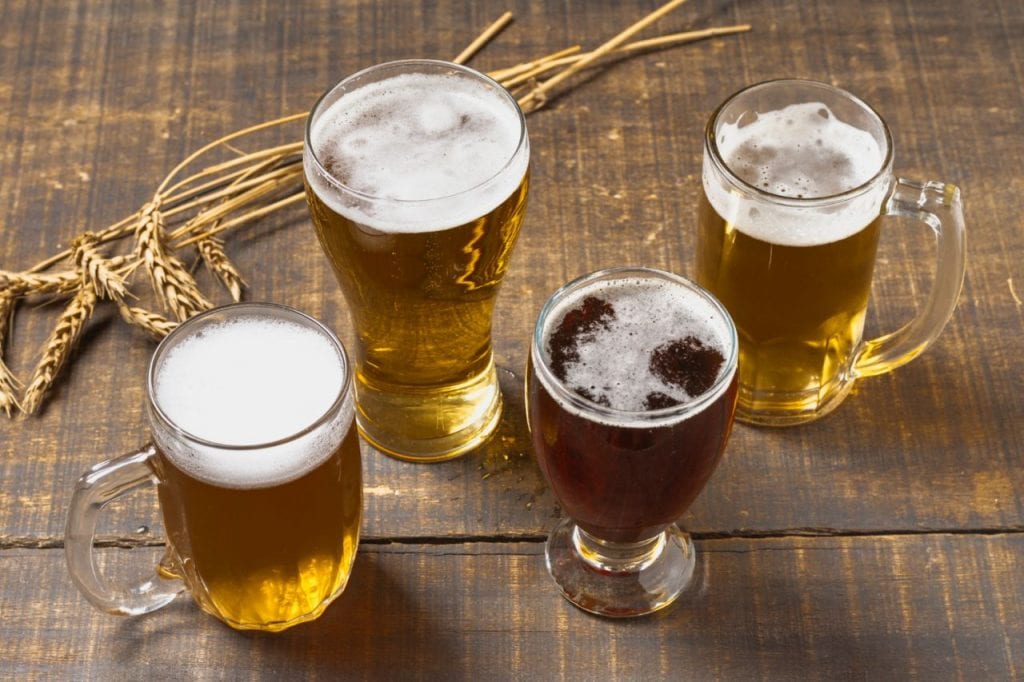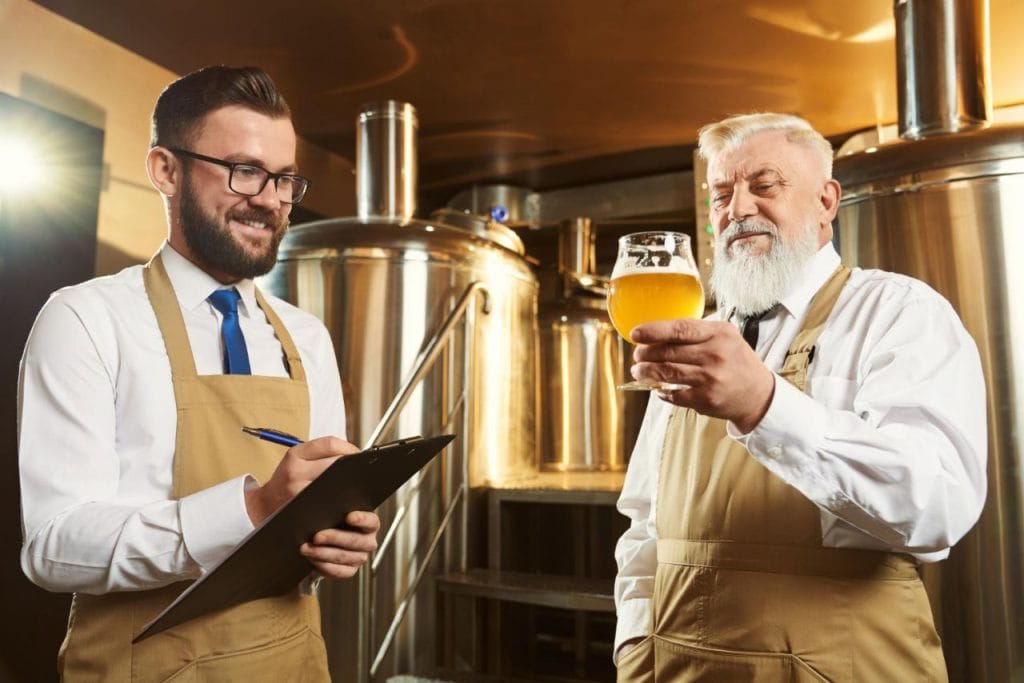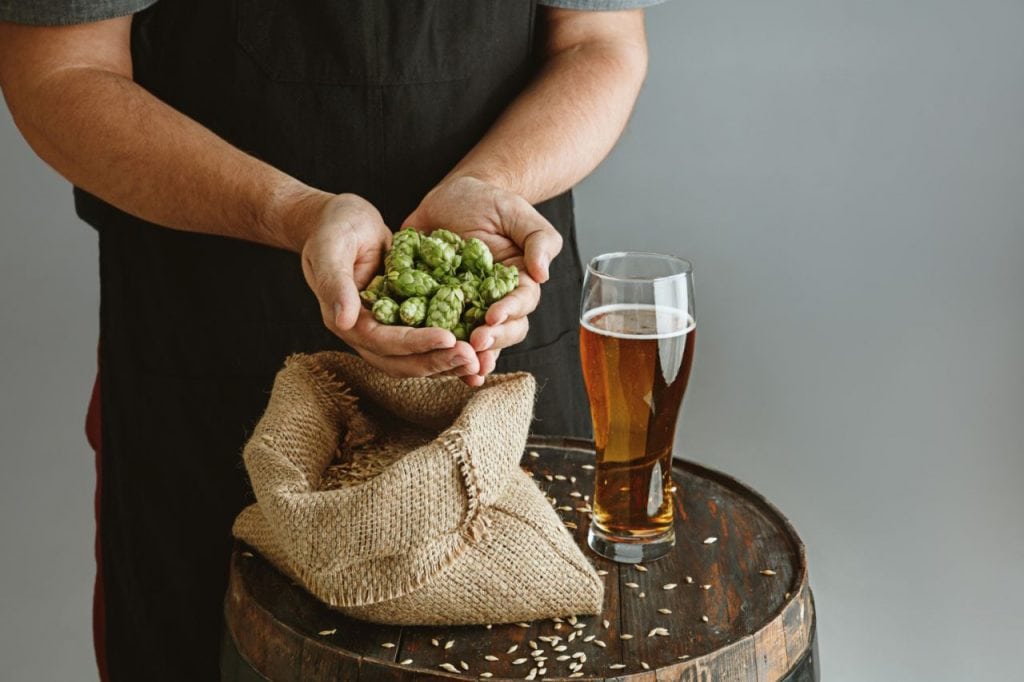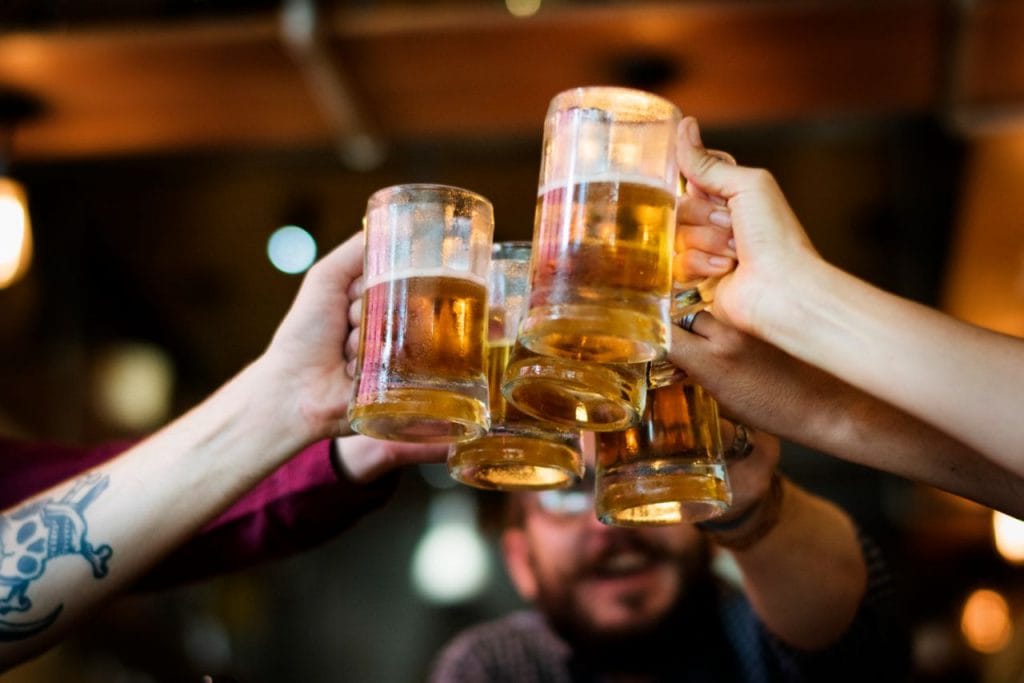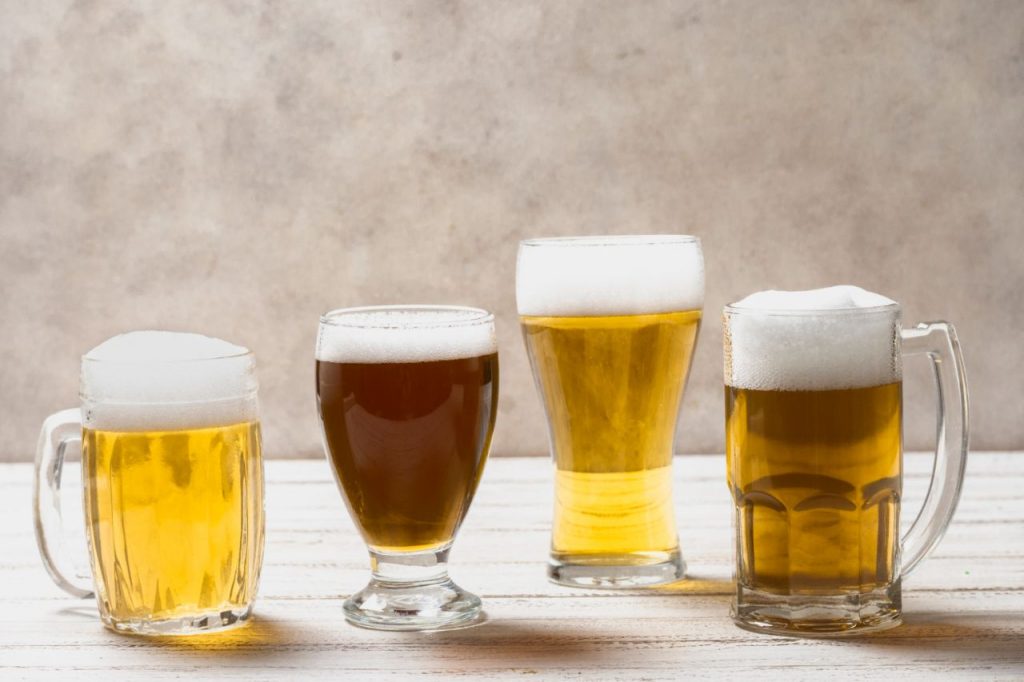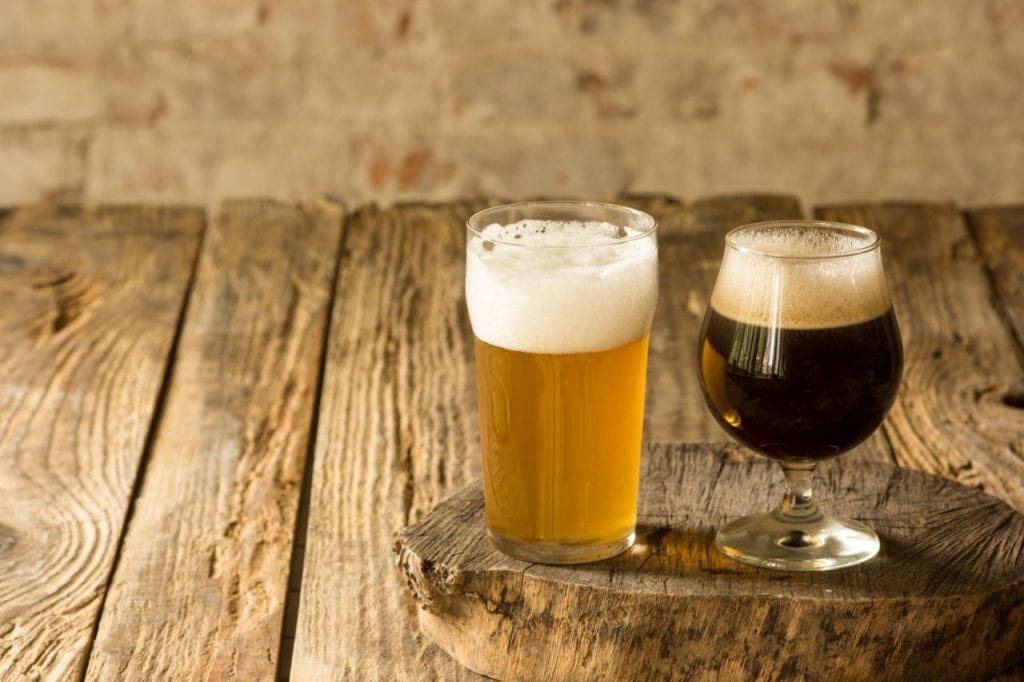On brew day, you'll manufacture wort, or unfermented beer, by following the instructions in the beer recipe. First, malt extracts, hop, and other substances are added to boiling water.
The resulting wort is high in sugars, which the yeast will use to produce ethanol and carbon dioxide. In scientific terms, this is known as the fermentation phase.
This blog will guide you through brewing your first beer, from selecting the right ingredients to fermentation and bottling. We'll also share tips and tricks to help you avoid common pitfalls and make your first brew day successful. So, grab a cold one, and let's dive into the wonderful world of homebrewing!
Craving some craft beer and spirits? Visit us today at Tar Barrel Mornington Brewery & Distillery for an unforgettable experience with craft beers, spirits and more!
How to Make Beer
It has been argued that brewing beer combines both science and art. Although there is an element of precision and calculation, the "rules" and potential boundaries are often vague, allowing for individual interpretation and the development of a genuinely one-of-a-kind brew. It may be difficult, right? Well, it’s not.
Making beer ultimately comes down to a basic procedure that originates back about 12,000 years. To make beer, boil water with grain with hops, let the liquid cool, ferment it with yeast, and finally carbonate it. Simple enough? Therefore, let's dive more into each stage.
Sanitising and Cleansing
You will start brewing once you've gathered all the supplies. Initially, you’ll need to properly clean and disinfect all your equipment. This is a vital stage. In this case, you should not try to cut corners.
Cleaning with an unscented mild detergent and sanitising with a solution certified for sanitation are required steps for anything that will come into touch with the beer during the brewing process.
Once you’ve adequately sanitised and cleaned all equipment, this time to commence brewing!
The Brew
During the brewing process, you must pay the closest attention to it. This is because it is crucial to stick to a regimented schedule and keep a close eye on the brewing process as it unfolds. This procedure is broken down into several smaller steps, each of which is crucial. These steps are mashing, lautering, and boiling.
Putting forth the maximum effort now will pay off in the final quality of your beer. You must complete all of these essential brewing procedures, as they will serve as the foundation for your final product. If you make a mistake, it will have repercussions.
Remember that you will probably need to correct some things the first few times you try to brew your beer. This should not bring you down or dampen your spirits. Everybody makes errors; you must accept that as a natural part of the learning process. Write things down, admit defeat, and turn setbacks into educational opportunities.
Brewing Techniques
There are three main ways to brew beer: partial mash brewing, extract brewing, and all-grain brewing. As the names imply, the primary distinction between the processes is in creating the beer's foundation.
Extract Brewing
In extract brewing, the "wort" (the beer's foundation) is crafted from grain extracts, which can be dry, liquid, or a combination of the three. Extract brewing is great for newbies, amateurs, or even intermediate brewers because it requires less room, time, and equipment than brewing with grain. Some advanced brewers continue to use extract brewing because of the ease with which it may be done.
Partial Mash:
Mini-mash, also known as partial mash brewing, is a technique that uses malt extract in addition to grain. The combination of these elements gives you greater control over the final beer's flavour, body, hue, and scent.
If you have a solid understanding of the process of brewing beer using extract-only methods but are looking to take your brewing to a higher level, this is a wonderful option to consider. This change has come about since brewing using whole beans does not need any more time, equipment, or space than brewing with extract alone.
All-Grain Brewing:
All-grain brewing is not excluded from consideration by any of the above. This approach yields the most genuine beer, but it requires more space (and hence more money), more time, and much more brewing know-how than alternative approaches.
All-grain brewing relies solely on the grains themselves as a source of fermentable sugars, rather than malt extracts. Also, this approach provides more flexibility in terms of tailoring beer recipes. Hence, it could potentially lead to a higher rate of errors. All-grain brewing is not for the faint of heart and requires a deep understanding of the brewing process and a lot of practise.
The Brewing Procedure
Now that you know your brewing options, let's go over the process step by step.
The Mash
The mash, often known as mashing, is the first step in making beer. The mash is the step where the grain's enzymes are activated to convert the starches into sugar, which serves as "food" for the yeast. The beer's colour, body, and flavour will derive from this mash.
Somewhat like letting tea simmer, mashing is a slow process. Hot water will submerge your grain bill, causing the starches to soften and the enzymes within the grain to become active, transforming the starches into fermentable sugars. The quality of the water used, the temperature and the amount of stirring are all crucial factors in creating a successful mash.
Lautering
Lautering, or separating the wort first from the grain, is the next procedure. The sugars that remained in the grain after the mash need to be released. You're doing it because you want to maximise your return on investment. The more sugar available, the higher the probability of a successful fermentation and, thus, a beer instead of sugar water.
Depending on the brewing style, there are several ways to finish the lautering process, but in nearly all cases, a phase termed "sparging" is included. Sparging is the process of pouring hot water over the grain to "rinse" off any residual sugars by heating the water to a higher temperature than for the mash. Brewing techniques that are more complex than this often use the same basic idea but may require additional equipment.
The Boil
The boil and the mash sometimes need clarification, but they serve different purposes.
There is no need to cook the mash for the starches to be converted into sugars. Even so, "boil" is a perfect description. It takes place at a significantly greater temperature than the mash (about 212°F depending on altitude) and lasts much longer.
Adding hops requires a stable wort with a low pH, which is achieved by boiling the mixture to inactivate any leftover enzymes, eliminate any dangerous oxygen, and reduce the wort's temperature.
Hops are essential in brewing and have a wide variety of applications outside of beer. Hops offer bitterness to the beer, which is needed to balance the drink's sweetness from the grain. In addition, hops can be added at various stages of the boil to alter the beer's flavour and aroma.
Hops are not only a tasty addition to beer, but they also act as a natural preservative by warding off bacteria and other dangerous diseases. In addition, the boil is meant to sterilise everything so that fermentation goes smoothly.
After the Brew
Now that brewing is done, the wort must be ready for fermentation. The wort's temperature is rapidly lowered, water is added, the specific gravity is measured, and the yeast is pitched.
Cool Down
If you want to keep the wort from getting contaminated after the boil, you need to cool it down as soon as possible. In less than 20 minutes, the wort should reach room temperature.
This could be an easy or difficult process, depending on the size of your batch and the surrounding temperature. It can be done in various ways, but the wort must be cooled down.
Ice Bath
Most amateur beer brewers learn the craft by immersing wort in an ice bath, the quickest and easiest way to chill it down before it's ready to ferment.
Sinks, bathtubs, or other big containers can be filled with cold water and loaded with ice according to the dimensions of your batch. The wort's temperature can be lowered as quickly as desired by placing it in an ice bath of any temperature.
After the ice bath has been made, the brew pot should be lowered into it slowly while being stirred regularly to ensure even cooling of the wort. It would help if you took additional precautions not to splash water into the pot when you set it in the bath. Very hot conditions in the pot and wort will cause the ice to melt quickly; add more ice as necessary to maintain a constant temperature of room temperature.
Wort Chillers
Wort chillers, available in immersion, counterflow, and plate styles, are only one example of a more modern and efficient method for lowering the temperature of the wort. As these may be used again without ever needing ice, the extra cost is worth it.
Cooling wort successfully can be challenging at first, but like everything else in brewing, it gets simpler with practice.
How to Enhance a Beer
It's a lot of fun to play around with different 'enhancements' after you've gotten the hang of brewing your beer at home. Though putting your spin on things is great, it's important to proceed cautiously and not go overboard when adding your touches. Some ideas are as follows:
Hops
Wrap some dried hops in cheesecloth and toss them in with the malt while boiling. What you have there is more than enough. This will impart a unique hop flavour towards the beer and aid in the end product's preservation. As far as the language of beer goes, ale is what you term a beer that doesn't contain hops.
Molasses
While the malt is simmering, stir in a cup or two of molasses. Try consuming a little less sugar. The beer's colour and body will both improve as a result. Fancy molasses is more transparent and less concentrated than its darker counterpart, blackstrap molasses.
Licorice
While the malt is simmering, add a couple of sticks of licorice for flavour. Let alone for 5-10 minutes, then strain off chunks that haven't melted and pour the brew into a carboy.
Herb Teas
Three or four teabags of Celestial Seasonings' "Bengal Spice" or "Apple Cinnamon Spice" tea might be a nice addition. Malt should be added during the last 10 minutes of cooking and then taken out. This will give the beer a unique and exciting flavour that will stand out.
Herbs
Instead of hops, many brewers would use a gruit, a mixture of herbs used to counteract the sweetness of the malt. Sweet gale, yarrow, juniper, Labrador tea, mugwort, nettle, anise, and caraway are all examples of common plants. Cooking and fermenting are common times to add these preparations.
Conclusion
It takes a blend of science and art to brew beer, which entails boiling water with malt extracts, hop, and other components, fermenting the mixture with yeast, and then carbonating the beverage.
There are a few different ways to brew, the most common of which are the partial mash, the extract method, and the all-grain method. Brewing with all-grain ingredients calls for a comprehensive knowledge of the brewing process and significant hands-on experience. During mashing, enzymes break down starch into sugars that can be used in the fermentation process. This is followed by lautering and sparging.
The term "boil" refers to the process of boiling the combination to deactivate any remaining enzymes, remove any harmful oxygen, and lower the temperature of the wort. After the boil, swiftly cool the wort in ice baths, sinks, bathtubs, or wort chillers to kill any bacteria that may have contaminated the wort. Hops, molasses, licorice, herbs, and spices are just some of the 'enhancements' that can be tried out in an effort to improve the wort's flavour while it's being cooled, which can be a tricky process.
Content Summary
- On brew day, you'll manufacture wort, or unfermented beer, by following the instructions in the beer recipe.
- In scientific terms, this is known as the fermentation phase.
- We'll also share tips and tricks to help you avoid common pitfalls and make your first brew day successful.
- Making beer ultimately comes down to a basic procedure that originates back about 12,000 years.
- To make beer, boil water with grain with hops, let the liquid cool, ferment it with yeast, and finally carbonate it.
- You will start brewing once you've gathered all the supplies.
- Initially, you'll need to properly clean and disinfect all your equipment.
- This is a vital stage.
- Cleaning with an unscented mild detergent and sanitising with a solution certified for sanitation are required steps for anything that will come into touch with the beer during the brewing process.
- Once you've adequately sanitised and cleaned all equipment, this time to commence brewing!
- Remember that you will probably need to correct some things the first few times you try to brew your beer.
- This should not bring you down or dampen your spirits.
- Everybody makes errors; you must accept that as a natural part of the learning process.
- Write things down, admit defeat, and turn setbacks into educational opportunities.
- There are three main ways to brew beer: partial mash brewing, extract brewing, and all-grain brewing.
- As the names imply, the primary distinction between the processes is in creating the beer's foundation.
- In extract brewing, the "wort" (the beer's foundation) is crafted from grain extracts, which can be dry, liquid, or a combination of the three.
- Mini-mash, also known as partial mash brewing, is a technique that uses malt extract in addition to grain.
- If you have a solid understanding of the process of brewing beer using extract-only methods but are looking to take your brewing to a higher level, this is a wonderful option to consider.
- The mash is the step where the grain's enzymes are activated to convert the starches into sugar, which serves as "food" for the yeast.
- The beer's colour, body, and flavour will derive from this mash.
- The quality of the water used, the temperature and the amount of stirring are all crucial factors in creating a successful mash.
- Lautering, or separating the wort first from the grain, is the next procedure.
- The sugars that remained in the grain after the mash need to be released.
- Depending on the brewing style, there are several ways to finish the lautering process, but in nearly all cases, a phase termed "sparging" is included.
- Sparging is the process of pouring hot water over the grain to "rinse" off any residual sugars by heating the water to a higher temperature than for the mash.
- The boil and the mash sometimes need clarification, but they serve different purposes.
- There is no need to cook the mash for the starches to be converted into sugars.
- Hops are essential in brewing and have a wide variety of applications outside of beer.
- Now that brewing is done, the wort must be ready for fermentation.
- If you want to keep the wort from getting contaminated after the boil, you need to cool it down as soon as possible.
- In less than 20 minutes, the wort should reach room temperature.
- Most amateur beer brewers learn the craft by immersing wort in an ice bath, the quickest and easiest way to chill it down before it's ready to ferment.
- Sinks, bathtubs, or other big containers can be filled with cold water and loaded with ice according to the dimensions of your batch.
- The wort's temperature can be lowered as quickly as desired by placing it in an ice bath of any temperature.
- After the ice bath has been made, the brew pot should be lowered into it slowly while being stirred regularly to ensure even cooling of the wort.
- Very hot conditions in the pot and wort will cause the ice to melt quickly; add more ice as necessary to maintain a constant temperature of room temperature.
- Wort chillers, available in immersion, counterflow, and plate styles, are only one example of a more modern and efficient method for lowering the temperature of the wort.
- Cooling wort successfully can be challenging at first, but like everything else in brewing, it gets simpler with practice.
FAQs About Beer
Sanitising your equipment is crucial to prevent contamination and ensure a successful brew. Use a sanitiser such as Star San or Iodophor according to the manufacturer's instructions.
Yes, you can brew beer without a kit using individual ingredients such as malt extract, hops, and yeast. This method requires more knowledge and experience but can also allow for more creativity and customisation in your beer.
You can use a hydrometer to measure the specific gravity of the beer to determine when fermentation is complete. You can also look for visual signs such as the absence of bubbles in the airlock or the settling of sediment at the bottom of the fermentation vessel.
You can naturally carbonate your beer by adding priming sugar before bottling or kegging. The remaining yeast in the beer will consume the sugar and produce carbon dioxide, carbonating the beer. Alternatively, you can force carbonate your beer using a CO2 tank and regulator.
The brewing process can take several hours, depending on the recipe and equipment. Fermentation usually takes about 1-2 weeks, followed by conditioning for 1-2 weeks, and then bottling or kegging the beer, which takes another week or two.

